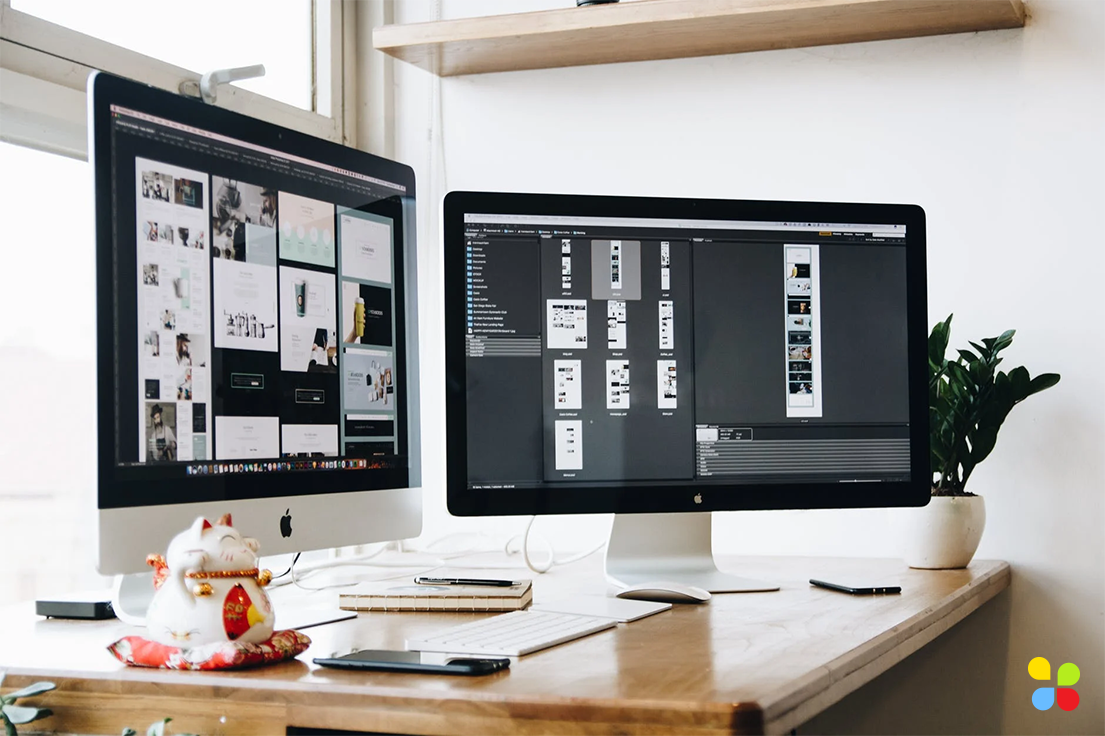
It’s impossible for businesses to succeed these days without focusing on what customers want. You want to align your offerings and marketing to meet the desires of your target market because this dictates your brand image. Staying ahead of the curve in terms of UX/UI design trends is paramount to business development in this cut-throat online business environment.
Not too long ago, marketing was largely business-facing. Organizations and companies shaped consumer perception about their products and services through marketing. And they advertised their products based on what (and how) they wanted to sell and not what consumers wanted to see (or hear, based on the type of advertisement).
That’s no longer the case. The new era of marketing is more consumer-oriented. Businesses focus more on what consumers want.
As a business owner your focus must be on your online presence and customer experience by revamping your website if need be. Let’s take a look at some UX/UI Design Trends for 2021 that you need to leverage to ensure your website is adequately consumer-oriented.
Contents
Understanding UX and UI Design
Before we dive into the specific UX/UI trends for 2021, one thing that warrants clarification, especially for the layman, is the difference between UX and UI design.
Although often used in conjunction, even in practical terms, and most developers do take care of both UX and UI design for a website – the two are quite different. They require different (yet somewhat overlapping) approaches.
UX or User Experience is widely considered to be the super-set of which UI or User Interface is just a part. This is true, to an extent, but there is more to the UX/UI relationship than the “whole and one element.”
As YouTube channel, DesignCourse aptly describes it (link to video), the UX design is the “big-picture” approach to website design, and it starts with research. The research entails understating the target market, developing user personas, identifying the variety (and range) of use cases, and creating a user journey map through the website.
Other UX steps include converting a theoretical journey map into a practical user flow by tinkering with navigation on the website and creating a wireframe or screen blueprint, which is a skeletal framework of the website.
That’s where UI designers come into the fold. They take that bare-bone skeleton and turn it into an attractive living organism by putting mass, skin, and clothes on it. The UI is more about the visual and interactive aspect of a website’s design, whereas UX is more analytical.
So even if UI is technically one aspect of the whole user experience (UX), one is not complete without the other. Also, the UX/UI relationship doesn’t end at inception, and it’s ongoing because once users start interacting with the website, a lot of useful data is generated.
Feedback, bounce rate, page-wise traffic, etc. All of this is useful data from a UX perspective and allows UX/UI designers to improve the website and make it more attractive for their users.
UX/UI Design Trends for 2021
Both UX and UI have a lot of overlap. And they are very distinct in some cases, which is why we’ve split the UX/UI design trends for 2021 into three sections.
- UX design trends 2021
- UI design trends 2021
- UX/UI design trends 2021
This will (hopefully) make the distinction clearer and will give you a more comprehensive picture of web design trends for 2021.
UX Design Trends 2021
Five modern UX design trends that you might want to focus on for this year are:
1. Personalization
This trend is not unique to this year as personalization has been the core aim of the user-centric approach from the very beginning. But it has gotten significantly easier with more advanced tools.
Personalization already happens on a number of websites (augmented by AI mostly), like Spotify’s music selection, social media feeds, and YouTube’s algorithms (when they are not trying to push marketed content).
The next-generation UX designs can leverage demographical data, personal information, user behavior, and preferences to create a more personalized experience. This will not just help with bounce rate and increase the time visitors spend on your web-page, but will also help with brand loyalty and user retention.
Examples: Netflix’s personalized movie/series recommendations, YouTube’s feed, Spotify’s music selection.
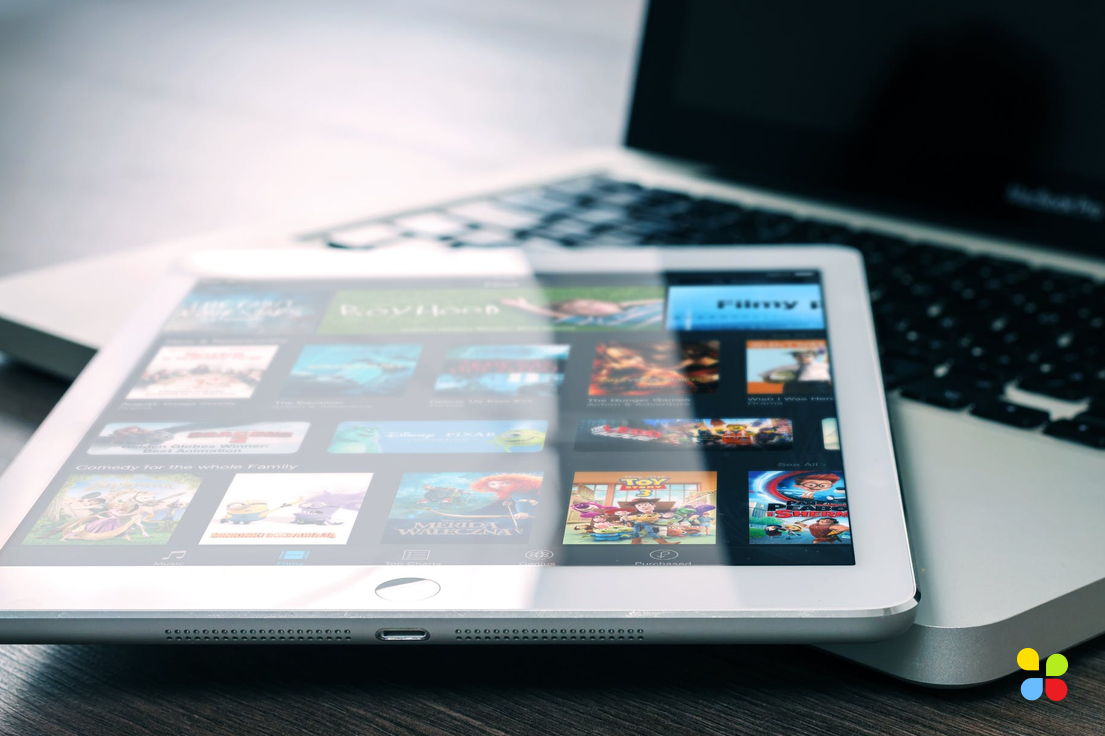
(Source: Pexels)
2. Micro-Interactions
Global internet traffic is moving rapidly from computers to mobile devices, and this makes a mobile app just as important (if not more) than the website for a business. Micro-interactions permeate both realms.
Symbols that change as you interact with a website or an app, or a changing color palette as you scroll up or down, or selections that hover when you move your pointer over them are all examples of micro-interactions.
These small movements and changes give the user the impression that something is happening, even when they are just browsing around, never actually clicking on anything.
A website (or app) with attractive micro-interactions might be able to hold the attraction of a user for a longer time than a website without these small movements. The reason this obviously “visual” design feature is under UX and not UI is that not everyone would react in the same way to micro-interactions.
Some might even get annoyed by too much movement. So, if you can’t identify how your audience will respond before deploying these interactions, do some A/B testing.
Example: Elivihotels website has a few subtle micro-interactions which create a sense of activity without making the interface slow.
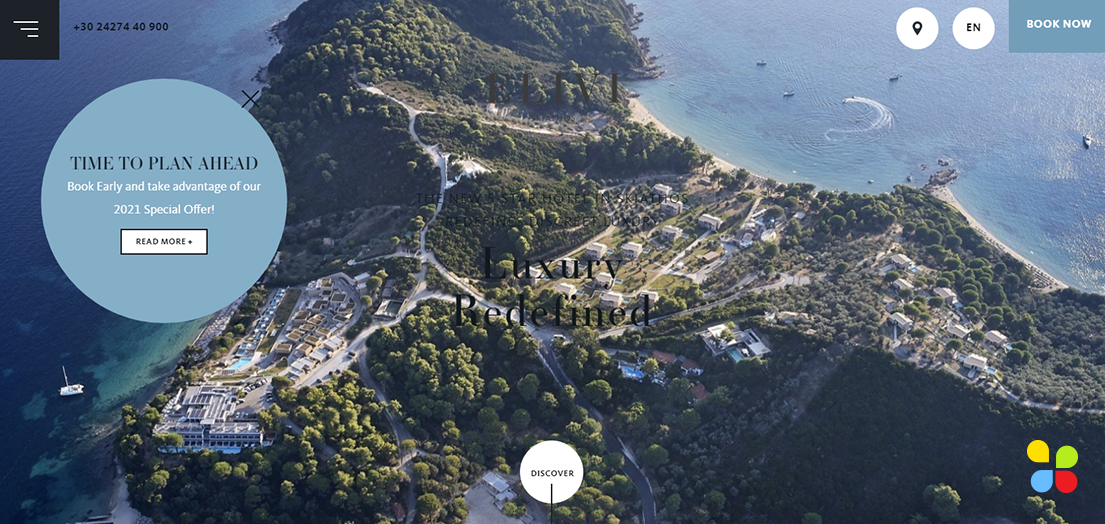
(Source: Elivihotels.com)
3. Niche vs. Mainstream
Your target audience is a primary motivator of your UX design considerations, and that’s why the debate of niche vs. mainstream design debate is highly relevant in 2021 and beyond.
It’s important to follow mainstream trends (up-to a certain degree and without compromising on your website’s individuality). Still, when you cater to a niche market, your audience’s perception, likes, dislikes, and preferences should take precedence over what’s “in” in the market.
For example, if you are working on a B2B financial website, you want a modern UX design that to exudes professionalism. It should be easy to navigate, not too tech-heavy, and should lean towards utility than artistic design. But you can’t transport the same “design features” to a financial website created to target young investors.
Example: Cyber Security Ventures is a niche website that follows a subdued color-palette (often associated with hacking and security) and simple template. The navigation is made easy by straight-forward content categorization.
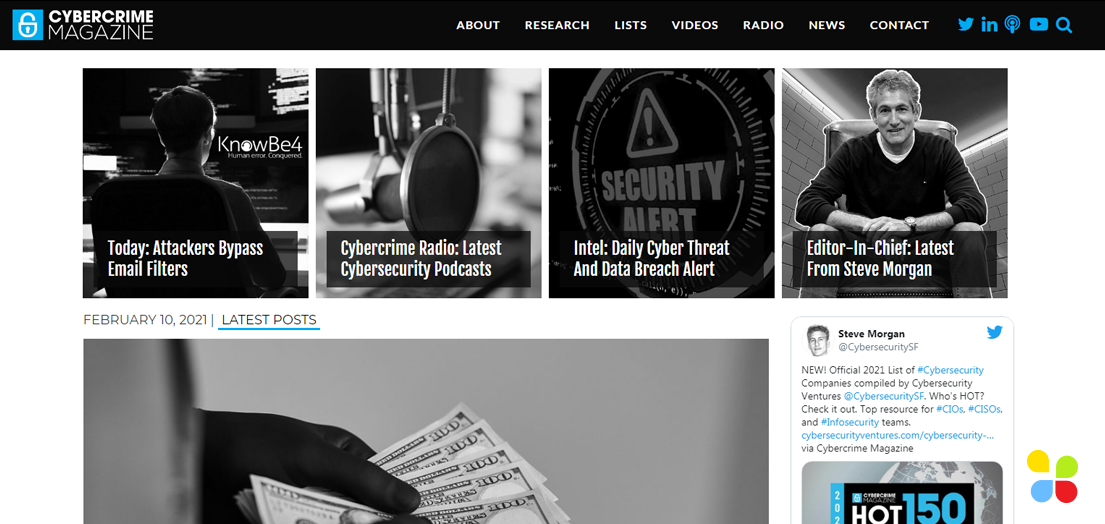
(Source: cybersecurityventures.com)
4. Transparency
UX is more than just about the functionality of a website. It represents a brand or a business more deeply. In recent years, businesses have moved away from keeping their facilities and processes hidden behind locked doors, and have become more transparent.
This trend is expected to keep or even gain more traction in the future and will perhaps be one of the most prevalent UX/UI design trends for 2021 and beyond.
This has become a part of the websites in many ways. Labels for materials that are ethically sourced and information regarding environmentally-friendly manufacturing processes have become commonplace on websites. Consumers have grown more socially responsible, and they want the businesses they engage with to do the same.
So transparency, especially in a way that would let your target audience see your website and your business as more genuine and relatable, should be an important UX design goal for you.
Example: Clothing website Patagonia shares its supply chain openly to augment their environmental responsibility claim.
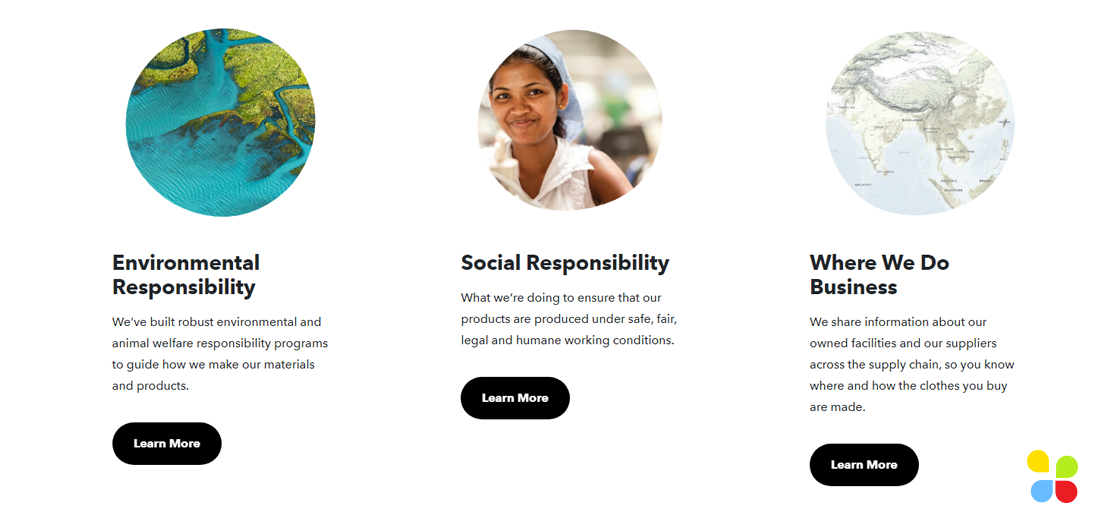
(Source: Patagonia footprint)
5. Learning
This is an unwanted yet helpful gift of 2020. From formal education to professional training, a lot of learning has gone digital and remote since the pandemic struck, and the trend is likely to continue in 2021 as well. There are dedicated learning platforms and a lot of websites (school, business, and even commercial websites) integrate those platforms into with their site design improve the learning experience of their target audience.
But if you can integrate mainstream learning tools into your website, make learning easier for your target audience, and create a different “learning” journey for each segment of your target audience, you will be able to keep a lot of traffic on your website, instead of driving them away to a different platform.
Example: Codecademy helps you learn programming by writing and testing code directly on the website.
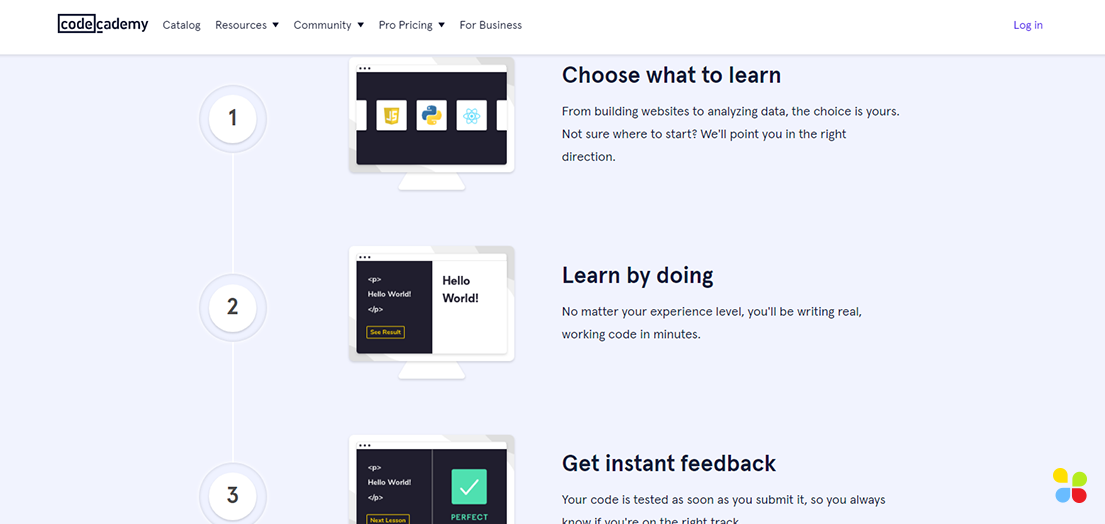
(Source: Codecademy)
UI Design Trends 2021
Web design is only becoming more and more visually appealing and user-friendly. If you focus more on what your target audience likes and less on pushing the UI design boundaries and trying to achieve artistic uniqueness, you will most likely hit your targets.
Therefore, it’s important to know which UI design trends are peaking in 2021 so you have an idea of what your audience expects.
1. 3D Design and Immersion
A website heavy with 3D designs and immersion might not be ideal for your target audience, but for the right audience, it can be a powerful design approach in 2021.
From purely aesthetic 3D design elements like icons and web page designs to actual utilitarian user interface elements like a model of the toy you want to buy or training created using 3D designs, 3D still has the potential to attract audiences.
Make sure your 3D-designs are portable and work well on both computers and mobile phones. 3D immersion is not just for games anymore. Many websites and apps can use 3D immersion to help their users understand complex scenarios and see objects from different perspectives before making a purchase decision. But the necessary evil that comes along with 3d is that it might slow down a page or an app.
Example: Some interior design websites include 3D models (which are sometimes immersive).
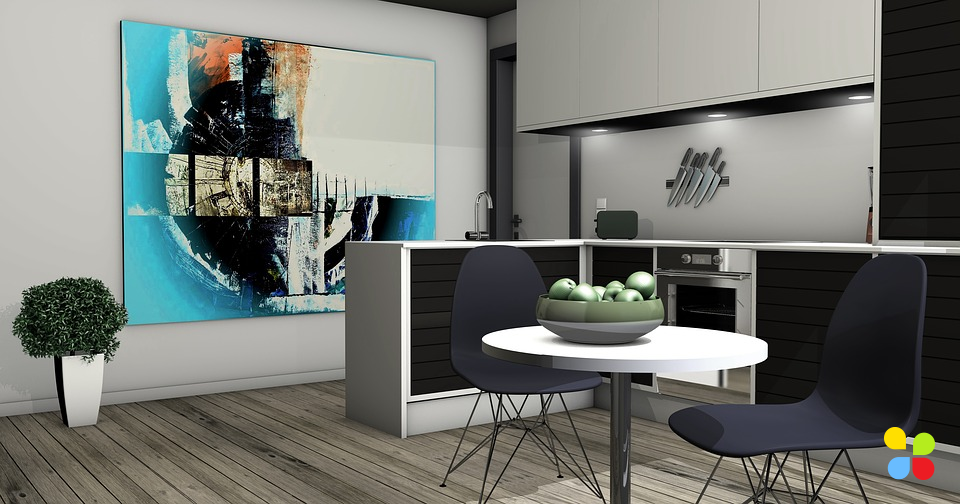
(Source: Pixabay)
2. Aesthetic Minimalism
For many UI designs, more is less. You don’t have to extend your artistic “claws” (Wolverine-style) for every website, especially when there are not a lot of elements you need to display on your home page or main landing pages. A simple uni-color background, precise and concise information, and simple buttons, which might not seem the most alluring of button design trends to many designers (or their clients), but it has its own appeal.
This is often seen in websites where “simplicity” is one of the key selling points for their products or services. The minimalistic UI design subtly drives the point home that just like the website, the products and services would be just as simple.
Example: Wealthsimple, a Canadian financial service company that offers a commission-free trading platform and robo-advisor, has a minimalistic and simple design.
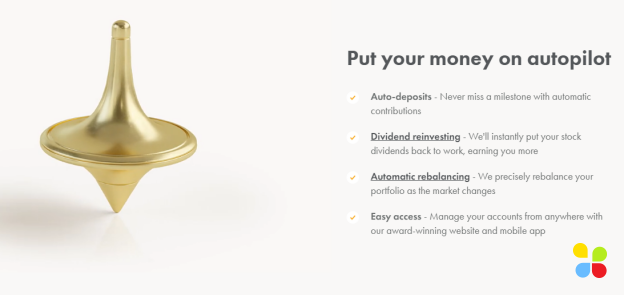
(Source: Wealthsimple products, investment)
3. Glassmorphism
One of the most recent UI trends that are expected to gain momentum in 2021 is glassmorphism. With blurred, multicolor backgrounds, you can give your website or app a “through the glass” look. And while it may not be as potent as Alice through the looking glass, the effect is quite beautiful and can be used on a variety of websites.
The slightly opaque visualization of elements can be both artistic, and in some cases, more realistic ad relatable.
Example: Dribble has some amazing glassmorphism design ideas.
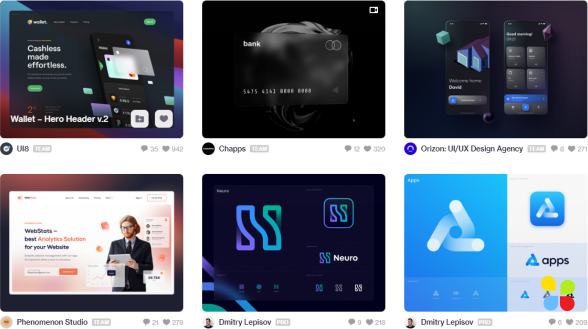
(Source: Dribble)
4. Photos: Show the Real You
Photos and real-life pictures can help you make your website feel more relatable and appear more authentic. They also help with the human element of the website. Photos are dominant in the UI design of websites related to vacations and traveling, but if you think your website can attract or retain more users if you highlight the human element of your business, you should integrate photos in the web design.
So for instance, instead of just a 3D model of a children’s toy (complete with dimensions and scaling features), you can add photos of children of different sizes and ages holding that toy, so other parents can imagine their child holding it as well.
Example: Fatbraintoys’ focus on photos that help kids enjoying their cool toys is a good example of how human-element can help users make purchase decisions.
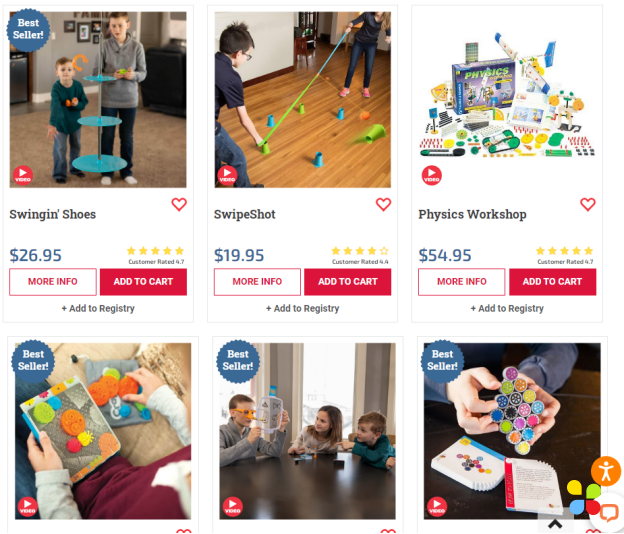
(Source: FatBrainToys)
5. Asymmetric Layout vs. Geometric Structure
Both asymmetric layouts and geometric structures adorning the UI are expected to be among the top UI design trends in 2021. While an asymmetric layout might not be ideal for a formal website or a website people only access as per need and prefer it to be more conventionally structured, it might be a major plus for websites where users like to browse around spend some time.
Asymmetric layouts are unique, help your website stand out among the crowd, and sometimes feel more inviting than the traditional layouts.
Geometric structures can be integrated into the UI in two major ways. You can divide the information on a page into conventional geometric shapes (mostly squares and rectangles), making them look clean and well-sorted. Or you can integrate various geographic shapes in the background and button designs. It can be a bit unconventional but also refreshing. For example, a website with a hexagon in its logo can make all of its buttons hexagons.
Example: BuiltbyBuffalo has incorporated the un-common hexagon in their website’s design.
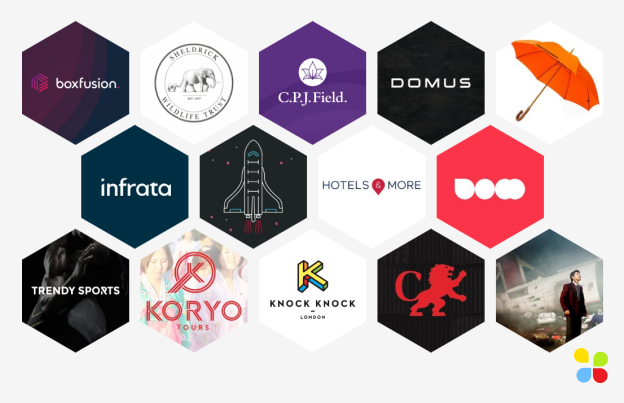
(Source: Builtbybuffalo)
Both asymmetric layouts and geometric structures are likely to be part of 2021 dashboard design trends and button design trends.
UX/UI Design Trends for 2021
Did you know that 94% of the factors that determine the first impression of your product are design-related? An impressive UX/UI design can help you make a strong first impression and turn more inquisitive users into buying consumers.
Unlike sizeable enterprises and large teams where there are separate UX and UI designers, both focused on their respective trends. Most UX/UI designers wear both hats. Therefore, there are plenty of UX/UI design trends for 2021, where the edges between UX and UI are too blurry to tell apart.
Nevertheless, they are important trends that designers should keep an eye on.
1. Augmented and Virtual Reality
AR and VR have already penetrated the website and app design quite extensively, and it’s only going to gain more traction this year. We already have furniture apps that use AR to project the couch or table you are thinking of buying in your room so you can visualize it more realistically. This also helps with the dimensions.
Virtual reality is being used extensively in the real estate industry to create virtual tours. Potential homebuyers don’t need to attend an open house when they can take a virtual tour from the comfort of their home.
These are just two examples of how VR and AR are becoming a routine part of websites and apps. As a web designer, this is one of the UX/UI trends for 2021 that you have to keep a close eye on.
If you can create more value for your users by adding VR and AR elements to your design, it would be smart to do so ideally, before your competitors do, and gain more points as a thought leader in the industry.
2. Artificial Intelligence
The relationship between AI and UX/UI design is still budding, but it shows potential. Artificial intelligence can make UX research and the process of brainstorm significantly easier by processing more data than any human designer.
With enough data at its disposal, AI algorithms can also find patterns that humans can’t, and if you want to identify what is it that users like in the top ten websites in your industry/niche, AI can be your ally.
Other AI applications like Generative Adversarial Network (GAN), which sounds ominous (and it is, in the wrong hands), can be powerful tools for UX/UI designers. You might be familiar with the project “this person does not exist,” which creates completely unique human faces (which you can’t tell are computer-generated) after learning from thousands (or millions) of human faces. The same system can be used to predict unique design examples that are both familiar and new.
AI can also be used to enrich UX design. For certain websites, an AI can be dedicated to learn user behavior and tweak their journey through the website to create a personalized user experience.
3. Unique but Still Familiar
Thanks to the internet, nonconformity has become quite mainstream. Once, businesses tried their best to stick to conventional ways and tried to carve out a bigger piece of the pie (pie = consumer pool) by honing and marketing their competitive edge.
Now, businesses showcase their uniqueness. They proudly let the world know what makes them different. And if it resonates with enough people, they get a relatively more loyal consumer-base.
If you are trying to be unique just for the sake of being unique, it might not make the cut. While in 2021, most designers would try and make their design unique, only those who can balance their identifying features with the familiarity of the industry/market they are in might be successful. Take Google Glass as an example. It was too unique, too early to become a successful product.
Also, attracting more eyes is very different from improving your sales numbers. With a novel design, you might attract a lot of users. However, if that novelty is not backed by something substantial (and solves a familiar problem or serves a familiar purpose), it will wear off. And you might not see a substantial rise in conversions.
4. The Super app Uprising
“Super app” sounds super cool, but realistically, the term points to something that’s very utilitarian. Unlike websites, which tend to be much more comprehensive, apps are often very uni-directional. And it’s often beneficial for businesses to split their website’s functionality into multiple apps (like Facebook did with its messenger).
2021, though, might see a reversal, and UX/UI designers might start getting requests for coming up with a practical design for super apps that combine several features into one.
One example is financial super-apps, which combine standing banking features, trading, robo-advisors, and portfolio management in one app. Wechat is another example, which is one app that’s used for almost everything in life. The UX/UI design for super-apps is also likely to be super complicated. You’d have to add features upon features without compromising the functionality of the app and also make the user interface easy to navigate.
This is one of the most research-intensive UX/UI design trends for 2021, especially now when there are relatively few examples.
5. Improved Onboarding Features
Millennials are early adopters of technology, and Gen-Z is the tech-native generation. A significant portion of the workforce and our societies is still made up of older generations that are not as tech-savvy as the younger ones. So transitioning to remote work was difficult for them. In order to accommodate them and making remote working and collaboration tools easier to understand, many websites overhauled their existing UX/UI design with better onboarding features.
This is another UX/UI design trend for 2021 that’s not going away anytime soon. You might have to redesign websites from the perspective of users that are not very familiar with the online world and might require a lead-by-hand approach. No matter how intuitive your website or app design is, it might still be difficult for some of your users.
The problem with integrating overly-helpful onboarding features is that they convey the wrong message to a more “seasoned” user. They’d think that if the website or the app has to describe every little thing to their user, the design itself might not be intuitive enough. One way to curb that is to make onboarding features optional. People who need them would appreciate the option, and other users can navigate your design without hints and pop-ups irritating them.
6. The Infamous Night Mode
The night mode, which used to be part of limited community sites/apps like 9gag, has become quite common. Most social media platforms now offer a night-mode, which many users find easier on the eyes. And this trend might stay strong during 2021. It has several benefits that users find attractive, like better visibility indoors (low-light conditions), less screen fatigue, improved battery time, and it looks more classy.
While many UX/UI designers might find themselves working on the night-mode of their websites, it’s important to note that it’s not ideal for every website and app. For apps where users spend only a few minutes at a time, introducing a dark theme might not be worth the cost. Similarly, text-heavy websites should stick to the conventional bright layout.
7. Performance and Speed
People are consuming more data every day than they did in weeks before the internet. As a result, their attention span is shortening, and people have developed a “knee-jerk” reaction to the content they don’t like. It takes mere seconds for most users to decide whether they want to stay on the website or not.
Now that is a performance and visual conundrum that UX/UI designers would need to deal with in 2021. With 5G rolling out and the average internet speeds improving, designers have more “room” in a way because thanks to the fast internet, heavier websites and web-pages might open just as quickly as light-weight websites, and they might not feel “heavy” when they are navigating. This allows them to experiment with 3D and introduce AR/VR in the design.
But, not all demographics might have access to the same quality of the internet and devices, and you should not compromise on the performance and speed of a website for an attractive UX/UI design. That’s because a slow to load a website or a brick-laden interface, no matter how visually appealing it is, might drive a lot of traffic away from your website.
8. Remember the Voice
With the rise of virtual assistants like Amazon’s Alexa, voice commands are on the rise. About 27% of the global online population already uses voice search, and the trend is only expected to gain traction with more such devices coming online and with the advents of the Internet of Things. So Voice User Interface or VUI is one trend that designers should definitely keep an eye on for 2021.
UX/UI designers might be able to expand the reach of a website by incorporating VUI into the design. They will have to create a separate user journey, identify VUI-unique user touch-points, and will have to analyze and utilize the anatomy of a voice command.
9. Think for Yourself
This is one of the most common UX/UI design “trends” you’d find in similar listicles, which speaks volumes about its importance. Whether you are designing in 2021, 2022, or any other year, you shouldn’t let popular trends blur your critical thinking. Not every trend is worth following, and few trends would match your brand image or would positively impact your user interaction.
Never forget the “U” in UX and UI. Think and design for your user. If you have a hip, teen audience that’s easily swayed by current trends and want to see them reflected in the businesses they interact with, you might have to follow and implement new design trends more frequently. If you have a stable audience that comes to your website for a specific reason, they might prefer easy familiarity over confusing novelty.
This is one of the reasons why authoritative websites, even the ones with significant overlap with digital marketing (Neil Patel, Moz, Hubspot), rarely change their design.
UX/UI Design – the Takeaway
For most websites, understanding new UX/UI design trends for 2021 might be just as important as understanding their target audience. But understanding new UX/UI design trends and implementing them in your website, app, or product are two different things.
You don’t have to incorporate every new trend, lest you create something completely unfamiliar and lose your original audience. Also, you don’t have to stick with every new UX/UI change just because you spent resources, time, and effort on implementing that change.
If you see bounce rates rising and your audience turning away, it might be better to revert to your original UX/UI design. In any case, our team of web designers is here to help.

